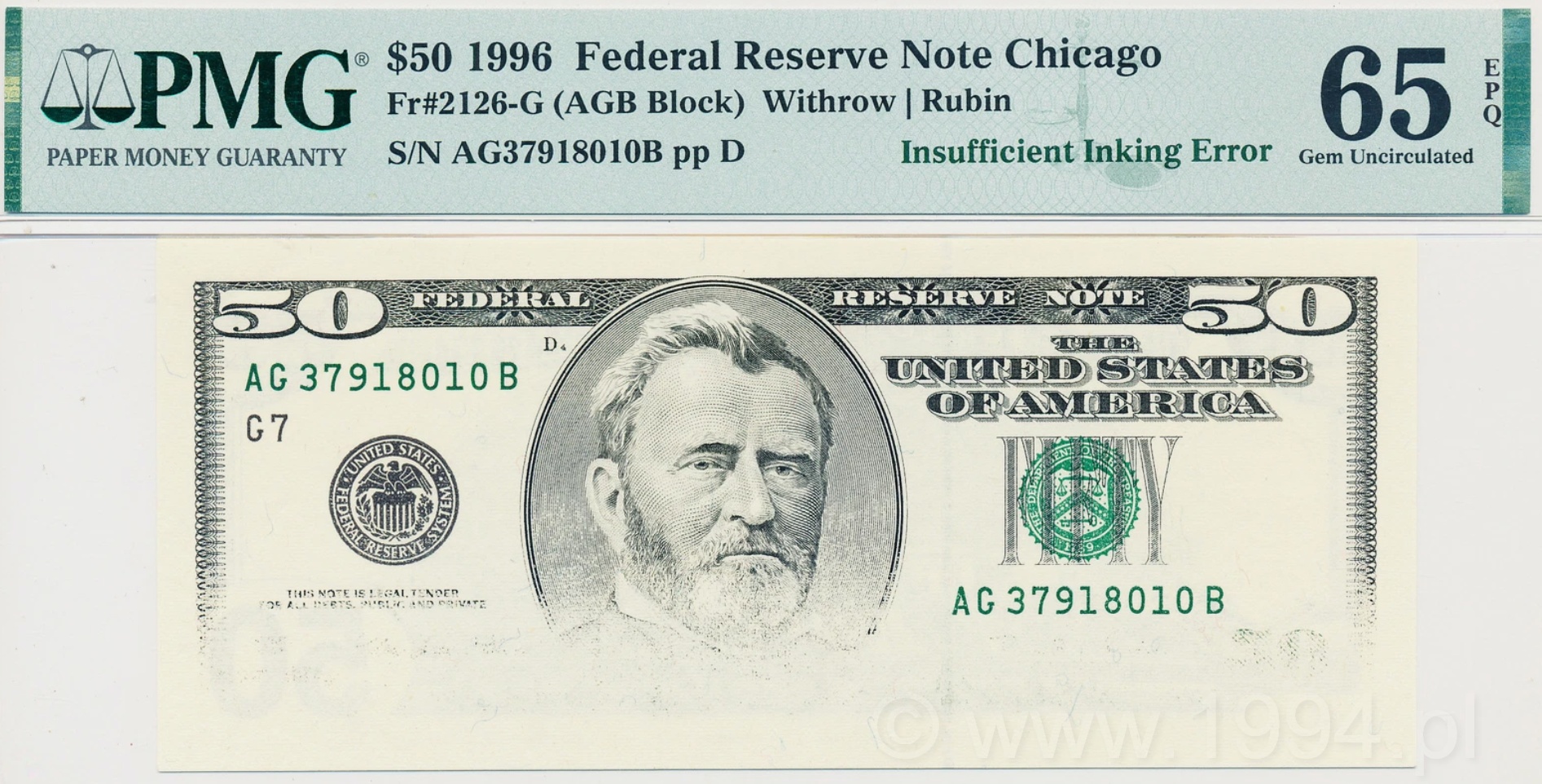Description and research notes
This 1996 50 Dollars Federal Reserve Note from the Chicago District (Friedberg 2126-G, AGB Block) demonstrates a dramatic Insufficient Inking Error affecting the left side of the obverse. The portrait of Ulysses S. Grant remains fully defined, yet the surrounding text, borders, and background show substantial ink loss, fading into near blankness. The mechanical cause was an uneven ink transfer during the intaglio stage—either due to low ink viscosity or an improperly adjusted wiping mechanism—which prevented adequate pigment from being carried into the recessed lines of the plate.
Errors of this severity are highly uncommon on mid- to high-denomination issues. The Bureau of Engraving and Printing’s late 1990s modernization program introduced automated inspection and improved quality monitoring, but rare lapses still occurred, particularly when print runs were transitioning between older and newer press systems. Inconsistent ink application or uneven plate pressure could yield localized under-inking, creating the ghosted design seen here.
This note’s importance lies not only in its rarity but also in its diagnostic clarity: the stark contrast between the well-inked right margin and the pale left edge offers a textbook illustration of the physical process behind intaglio press misfeeds. Specialists value such notes as tangible case studies in BEP mechanics—visible reminders that even in a controlled industrial environment, subtle shifts in pressure, humidity, or ink flow could create wholly unique outcomes.
Graded PMG 65 EPQ Gem Uncirculated, the note retains original embossing, crisp paper, and strong color on the unaffected portions. The combination of technical precision, visual drama, and impeccable preservation makes this a reference-quality example of an Insufficient Inking Error—an artifact from an era when human oversight and mechanical imperfection occasionally intersected to produce collectible modern rarities.
